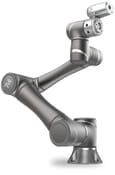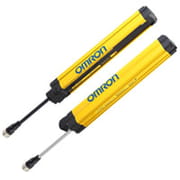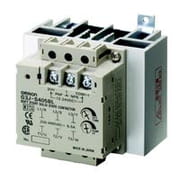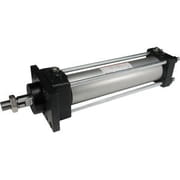In this guide, we're exploring the fascinating realm of linear actuators. You'll discover the various types, their practical applications, and reasons why opting for SMC's linear actuators could give your project the edge it needs. Prepare to get up to speed on all you need to know about linear actuators.
What Is a Linear Actuator?
A linear actuator is a device that converts rotational motion into linear motion. This transformation allows machinery or materials to be raised, lowered, slid, or tilted. Known for their efficiency, safety, and low maintenance, linear actuators are indispensable in various industrial applications.
The heart of an electric linear actuator is a combination of a DC or AC motor, a gearing system, and a lead screw, which together exert force on the main rod shaft. Actuators can be differentiated based on the motor's voltage, typically ranging from 12v DC to 48v DC. Another important distinction is between their static and dynamic load capacities. The dynamic load capacity refers to the force exerted by the actuator when in motion, while the static load capacity indicates how much stationary load an actuator can handle without moving.
Consider an adhesive applicator as an example. Previously a manual operation, it can now apply adhesive consistently and repetitively using a linear actuator.
Linear actuators play significant roles in everyday life, being integral components in automatic doors, adjustable automotive seats, and computer disk drives. At its core, the operation of a linear actuator is rooted in the principle of the inclined plane. This principle enables the actuator's lead screw to travel along a ramp using minimal rotational force, simplifying and amplifying its utility in various applications.
How Do Linear Actuators Work?
A linear actuator moves or actuates in a straight line. There are various ways to accomplish motion, even though the primary function of an actuator remains the same. Linear actuator utilization includes disability ramps, toys, and space-based technological instruments.
The operation of a linear actuator is relatively straightforward. When powered, a linear actuator either extends or retracts, generating straight-line motion to move objects.
Types of Linear Actuators
Linear actuators are designed in various styles and mechanisms to cater to diverse needs and applications. Their classifications are based on body styles, operational mechanisms, and special features. Here's a deeper dive into their types:
1-Linear Actuator Body Styles
- Standard Linear Actuators: The conventional design used for general applications.

- Stainless Steel Body: Made from stainless steel, these are ideal for environments that demand cleanliness or are corrosive.

- Round Body Repairable: A cylindrical design that can be easily disassembled and repaired.

- Tie Rod: These actuators use rods to secure both ends of the cylinder body, providing extra strength and durability.

- Compact: Designed to fit in small spaces without compromising on functionality.Perfect example to these cylinders is SMC NCQ2 compact cylinder is the inch version of the world's best selling pneumatic cylinder.The NCQ2 is available in 13 bore sizes from 12mm to 160mm. It comes standard with male or female piston rod threads.

- Interchange Type: Made for easy interchangeability with other actuators, offering flexibility in system upgrades or replacements.

2-Special Features and Applications
- Pin Actuators: Another connection or mounting style, often a simpler design and powerful, 4mm bore size option making it the smallest double acting pin cylinder around. 6, 10 and 16mm bore sizes complete the range, all featuring extruded aluminium bodies, making them not only compact, but extremely light weight.

- Special Application Actuators: Actuators specially designed for unique tasks or specific industries.

- Linear Actuators with locking: Comes with a mechanism to lock the actuator in place, ensuring positional stability.

Discover SMC Linear Actuators
While we've covered a wide range of linear actuator types, it's worth highlighting one particular brand that has consistently impressed with its innovations and reliability: SMC.
• Reduced Maintenance Costs: SMC linear actuators are built to last, minimizing downtime and reducing the overall cost of maintenance.
• Seamless Integration: Our actuators are designed for hassle-free installation, making it easy to integrate them into your existing systems.
• Energy-Efficient: If high energy costs are eating into your profits, you'll appreciate our actuators' energy-efficient design, aimed to lower your operational costs.
• Safety First: Concerned about workplace safety? SMC actuators come with built-in safety features to protect both your machinery and your team.
• Custom Solutions: Struggling to find an actuator that meets your specific needs? Proax offers customizable options to fit the unique requirements of your project.
Contact us today to discuss how our in house engineers can help you sеlеct thе proper linear actuator for your application, maximizе еfficiеncy, and push thе boundariеs of what's possible.







